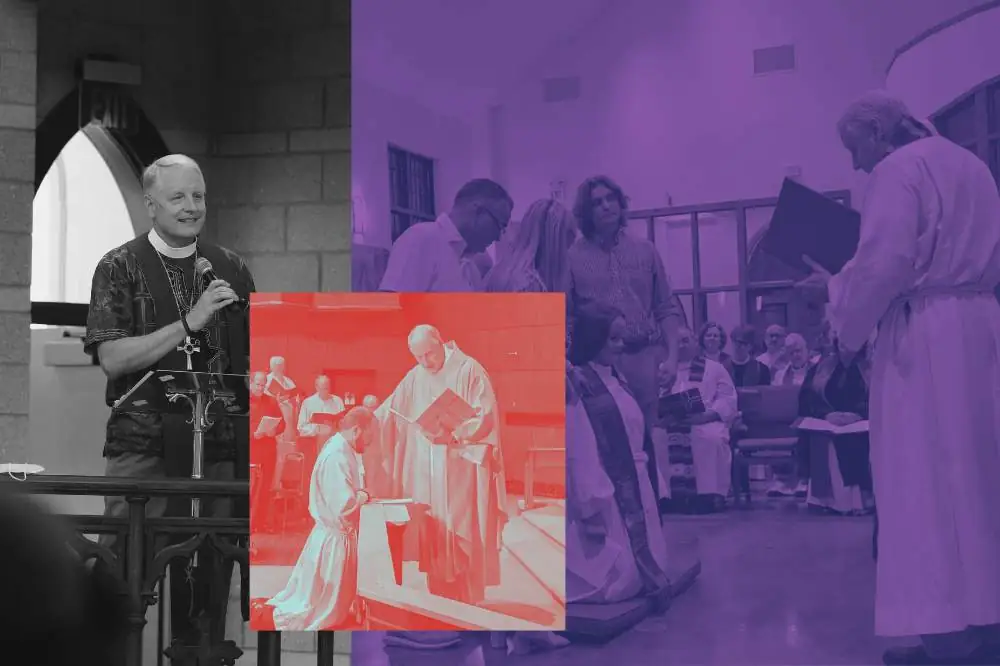In 586-87 BCE King Nebuchadnezzar II of Babylon, after a long siege, laid waste the holy city of Jerusalem, destroyed the supposed indestructible temple home of Yahweh and the ark of the covenant, deposed the Davidic dynasty, and took away all of the Jewish leaders to exile in Babylon. “Devastated” would be an understatement for ancient Israel, as their foundational and presumed eternal covenantal identities were ripped away: land, descendants, perpetual Davidic rule, and blessings evaporated.
So much of the hope and promise of Scripture comes from this time of exile. “By the rivers of Babylon, there we lay down our harps and wept when we remembered Zion” (Ps. 137) as the Babylonians taunted them with suggestions that either their God never existed or that their god Marduk was stronger. Ezekiel 37’s valley of dry bones—“clean cut off” with no hope for life—that yet come together and dance was a vision of hope amid hopelessness for these exiles. And Isaiah 40-43 offers a vision of comfort and restoration, a way out of no way, a highway made straight in the desert to take the exiles home. Fulfillment was in short supply. Hope and promise were what sustained a remnant to return.
That exile lasted nearly 50 years, and when finally the Persians defeated Babylon and Persia’s King Cyrus allowed the Israelites to go home, it wasn’t at all the Jerusalem or the Israel they remembered. Ezra and Nehemiah helped restore the law and the temple, but it was never the same again. God’s promises and presence remained, but if Israel were ever to thrive again, they would have to be faithful, patient, and persistent. There would be no on-demand return to all they remembered. They would have to adapt.
We know that many long, arduous, biblical trials were associated with the number 40, which simply meant “a really long time.” Rain with Noah for 40 days and 40 nights. 40 years with Moses in the desert. 40 days of temptation in the wilderness for Jesus. Remnants of that biblical number persisted in Caldwell County during my childhood. I remember my dad describing a crowded store by saying, “There must’ve been 40-‘leven people in there!” Getting through each of those long biblical struggles meant finding the delicate balance of faithfulness to essentials, patience, and willingness and ability to adapt.
Fast forward to our 2020. Remember March, when we were annoyed that our inconveniences and stay-at-homes and distancing and masking and sanitizing might last an unthinkable 4-6 weeks? Now in September, we’re still in Phase 2 with nearly 185,000 dead in America and counting, not to mention so many grieving, suffering lingering side effects, living in fear of infection, unemployed, and on and on. And our congregations in the NC Synod—some gathering in some ways, some waiting, quite a number increasingly threatened with their demise hastened by the limitations of this virus. There is no safe and immediate end in sight. Where is our God? Is our God? How long, O Lord? As with the biblical narratives, just adaptation without faithfulness or faithfulness without adaptation will fall short. We need both.
Many of our congregations have adapted very well to online platforms, even increasing the number of people reached. Others are just now venturing cautiously into the re-gathering arena. Amid much uncertainty, one thing I do know is that most of our leaders, despite their willing and creative and adaptive spirits, are weary. Not okay. Political and racial tensions threaten us just as much as the virus. Is there a way home? Will we even recognize that home when we get there? And will our people adapt?
None of us knows for sure. There’s a lot I don’t know and can’t predict. I do suspect a few things though:
- A number of our congregations that really were on the bubble of being able to afford full-time pastoral leadership will risk their very survival if they refuse to risk sharing ministry with others, including sharing a pastor (yoking).
- Technology won’t go backwards, even if a vaccine is effective or the virus mysteriously disappears. Many have adapted to online and on-demand options. Even when we can re-gather safely and freely, many of our folks will expect it. If we don’t offer it, they will find it elsewhere.
- The synod staff for the near-term will continue to explore, share, and equip congregations and rostered ministers to adapt, but realizing the toll on emotional energy as well as time, the staff will also try to fill some gaps to help the great majority of our congregations who have only one or no full-time pastoral staff members. These will include things like Bible studies, continuing to provide weekly sermons and call-in devotions, confirmation classes, Wednesday morning check-in calls, regular zoom gatherings of council presidents and treasurers, and other programmatic pieces as needful and requested.
- Cancellation of ELCA and synod-sponsored large in-person gatherings in already basically suspended for the rest of this calendar year and likely will continue for the future well into if not through 2021. While no decision has been made and won’t soon be, there is a strong possibility or likelihood that our June 2021 Synod Assembly, including the election of a bishop, will happen either partially or completely online.
- Governor Cooper will tell us within the next 10 days where we are in gathering protocols as a state. Our synod re-gathering task force will meet Sept. 10, and Synod Council will meet Sept. 11 and 12, at which time we will update our synodical recommendations for safe re-gatherings. You’ve likely correctly discerned by now that we will not be offering less restrictive recommendations than the state itself makes.
In the meantime, through this protracted challenge, and on whatever other side we come out of it, we’re here for you. And we trust with you that God even now is up to something transformative. We may even get back to Jerusalem someday. But it won’t, and can’t be, just like we left it in February. And that’s not entirely a bad thing with the God who continually makes all things new anyway. Hang in there.
Walking with you,





